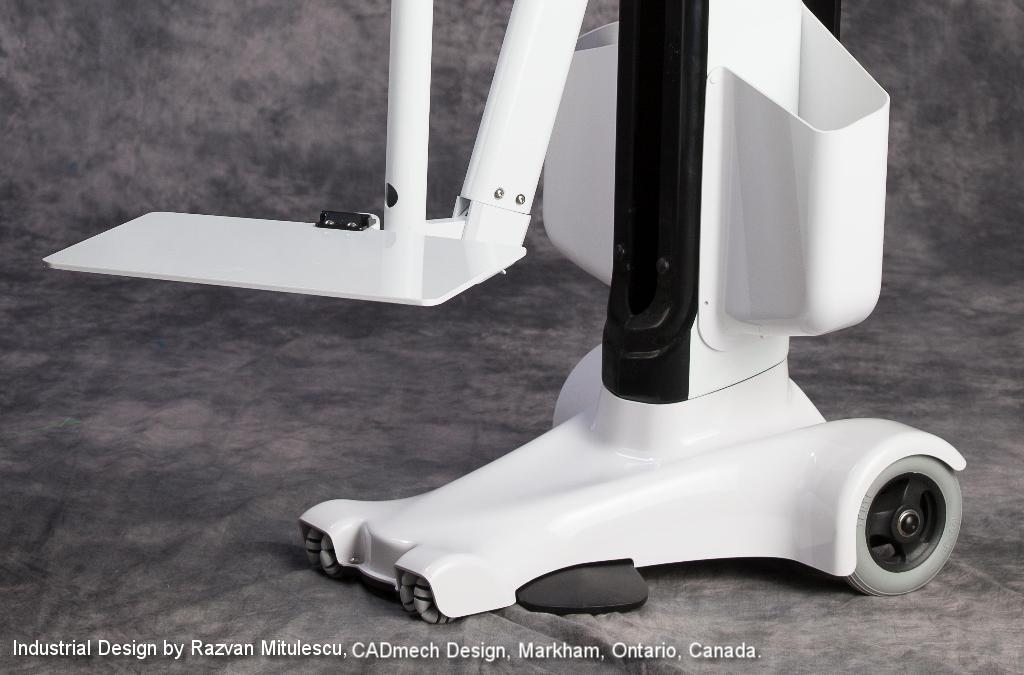The beauty of designing and manufacturing custom medical carts is that customers and engineers have the power to experiment and unearth innovative solutions to preexisting problems. And, although caster decisions may not be high on your list of priorities, the choices made in this area may affect the success of your product. It’s generally understood that medical carts are meant to be mobile, so what’s the point if optimal maneuverability cannot be obtained because of poor caster application?
As with anything else, it’s important to know what’s available. What are your caster options? Which combination of options comply with various intents? How do I get what I need and satisfy IEC 60601-1 third edition testing standards?
We’re glad you asked.
Types of Casters:
Swivel:
Much like the name so concisely implies, swivel casters do just that—swivel. Think of a shopping cart’s front two wheels. These casters are great for turning in every direction and parallel parking but are prone to veering off-course and tipping.
Rigid:
The opposite of its swiveling companions, rigid casters are like the back wheels of a shopping cart. These casters don’t twist or turn, keeping your product on track. However, their straight-line nature makes it difficult to manipulate into compact areas.
Directional Lock:
An interesting combination of swivel and rigid, directional locks possess the ability to swivel but is paired with a feature that locks the wheel in various directions depending on the brand. Some directional locking casters allow the user to lock the wheel rotation at 180 degrees, whereas others may lock every 90 degrees. This enables the device’s maneuverability while implementing the option to trek straight.
Total Lock:
Total locking casters take directional locks one step further by featuring a complete lock. It takes directional locks a step further by implementing a complete lock, working similarly to a parking brake. The locks on this caster definitely help with areas like 60601 testing, but it may not present itself as the most cost efficient option.
Single Wheel:
Perhaps it’s relevant here to point out that wheels and casters are not the same thing. A caster is a feature of a wheel, and a feature of a single wheel caster is that there’s only one wheel. Depending on the surface on which a medical cart will be moving, single wheels tend to focus a lot of the weight on a small surface area and can have adverse effects on carpeted flooring.
Dual Wheel:
As suggested by the title, dual wheels are essentially just that—two wheels to a caster. Dual wheels help with weight distribution which may be more or less prevalent depending on the flooring. Also, dual wheels are less likely to get caught in gaps like elevator doors or grates.
Design Purposes
Travel Long Distances:
If your medical cart will have to travel long distances—outside or long corridors—you may want to consider two rigid casters and two swivel casters.
Industry Standard:
As a general practice, it’s common for basic medical carts to have two total locking casters and two swivel or directional casters as this is economical, suits most purposes and will have an easier time complying with IEC 60601-1 third edition on sliding.
Depending on its weight, your medical cart may have to undergo tests on sliding and tipping. Hence, why many manufacturers are implementing more locking wheels. Either way, you’ll want the ability to maneuver (something that swivels) while tracking straight (some form of rigid or directional lock) and the ability to lock or brake to pass IEC 60601-1 third edition testing.
Lastly, if tipping may become a potential issue for your custom medical cart, consider implementing rigid casters on the side it is most prone to tip in its least conducive position. The rigid casters will provide stability.
Have any further inquiries about casters? Comment below or contact us today! We’re happy to help.


